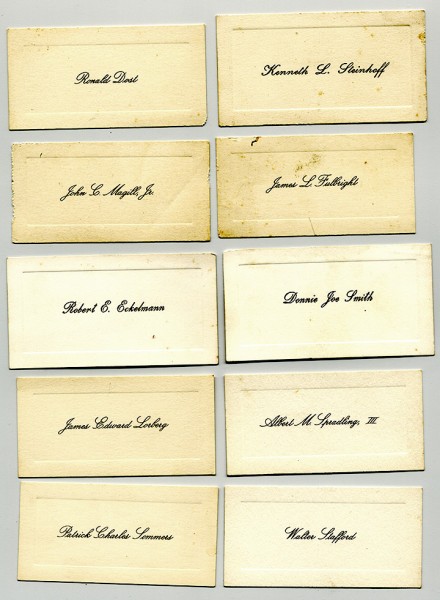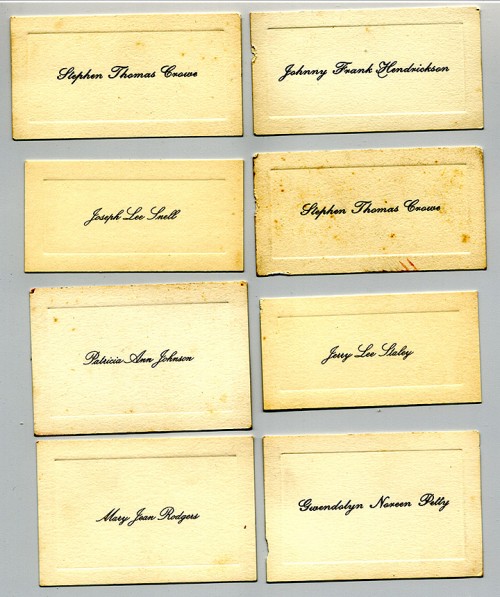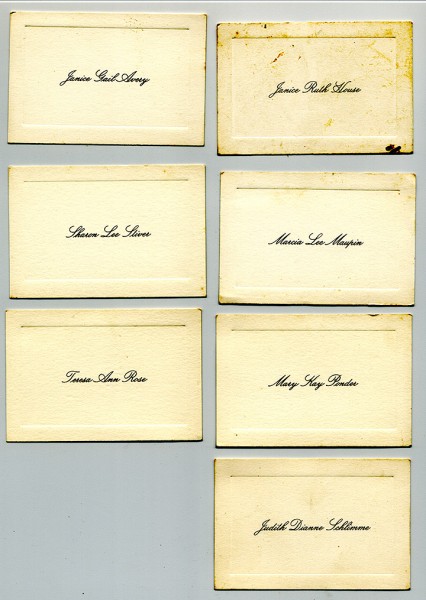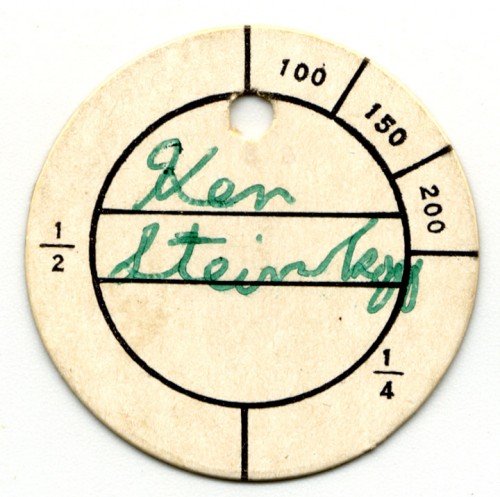 I was rummaging around in the attic this afternoon looking for something and ran across a box that hadn’t been opened in years. Some of the findings will show up later, but we’ll start with this object.
I was rummaging around in the attic this afternoon looking for something and ran across a box that hadn’t been opened in years. Some of the findings will show up later, but we’ll start with this object.
Anybody who went to Boy Scout Camp Lewallen will recognize it as the tag you were assigned after you had taken a swim check to determine your ability. Before you could get into the water, you had to pair up with a buddy and move your tags from one side of the “buddy board” to the other. In addition, you had to stay within an arms-length of each other at all times. If the lifeguards blew their whistles for a “buddy check” you had to grab hands and hold them in the air so they could see if anyone was missing.
If I remember correctly, non-swimmers got tags that were plain, like this one; beginners had the top half filled in with red, and swimmers had red at the top and blue at the bottom.
Here’s a good piece on Boy Scout swim tests and how traumatic they were if they weren’t handled properly.
I wasn’t big on swimming
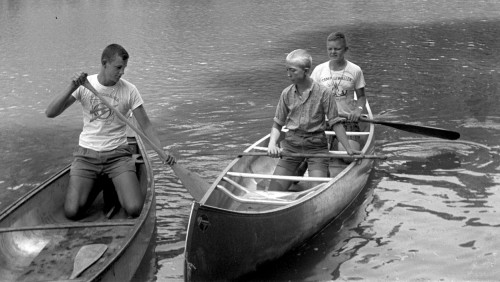 I clearly remember taking swimming lessons at the Capaha Pool when I was about 10. I knew from the moment that my skin touched that early June pool water that this boy was not cut out for any sport that requires you to crack the ice before you can participate in it. When I jumped into the pool, I ran across the surface of the water as long as I could, but eventually the laws of physics won. Shrinkages happened that I’m not sure have been reversed to this day.
I clearly remember taking swimming lessons at the Capaha Pool when I was about 10. I knew from the moment that my skin touched that early June pool water that this boy was not cut out for any sport that requires you to crack the ice before you can participate in it. When I jumped into the pool, I ran across the surface of the water as long as I could, but eventually the laws of physics won. Shrinkages happened that I’m not sure have been reversed to this day.
Before the pool was built at Camp Lewallen, we swam in the St. Francis River. Surprisingly enough, maybe because the water was warm by mid-summer, I learned to swim there fairly quickly. A couple of summers later, I earned the Canoeing merit badge there. I was old enough that the counselors would let us check out the canoes to go fishing or exploring up and down the river. That was one of my favorite summers.
After the pool was built, I set as my summer goal winning my Mile Swim patch. When I got home from camp, Dad was a little perturbed that I hadn’t earned any merit badges. I told him that the Mile Swim meant more to me than any merit badge. It represented an achievement that not everybody could reach. It was sort of like the first time I rode a Century (100 miles in one day) on my bike. I wasn’t fast, but I finished.
I don’t know who the counselor is on the left, but the boy in the back on the right is Tom Mueller. The other boy might be Mike Fiehler.
I regret to inform you
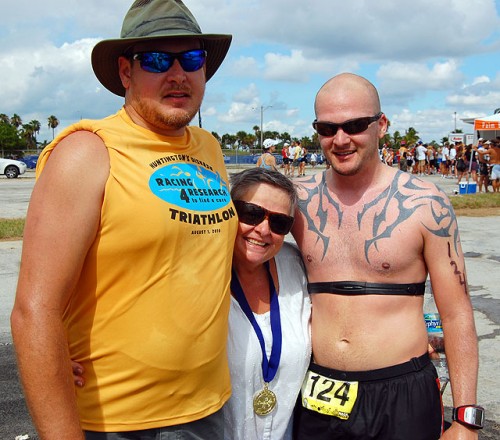 Wife Lila and Sons Matt and Adam participated in a family triathlon in 2010. When I wrote a post about it, I recounted the tale of her shepherding a bunch of Boy Scouts qualifying for their Mile Swim badge.
Wife Lila and Sons Matt and Adam participated in a family triathlon in 2010. When I wrote a post about it, I recounted the tale of her shepherding a bunch of Boy Scouts qualifying for their Mile Swim badge.
She was in the water with the Scouts at the Sebastian Inlet down here in Florida when all of a sudden, this huge, dark object rolled over right in their path. She said could just see herself writing a packet of “I regret to inform you that your son was eaten by an alligator while in my charge” letters.
Fortunately, the large object turned out to be a harmless manatee, and all the boys completed their mile.
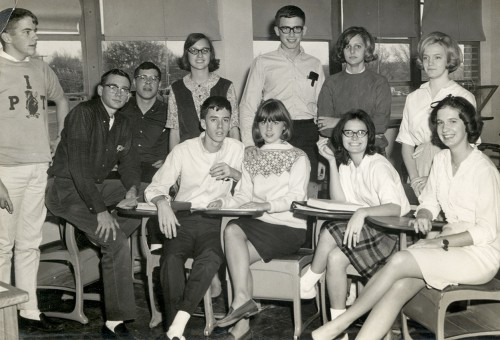 I posted pictures of a mad feeding frenzy after the Girardot yearbook had gone to press and the photos in it were made available for purchase. When I was going through a box of prints the other night, I found this one of what I assume to be the Debate Club. It had the price of 20 cents written on the back of it.
I posted pictures of a mad feeding frenzy after the Girardot yearbook had gone to press and the photos in it were made available for purchase. When I was going through a box of prints the other night, I found this one of what I assume to be the Debate Club. It had the price of 20 cents written on the back of it.


